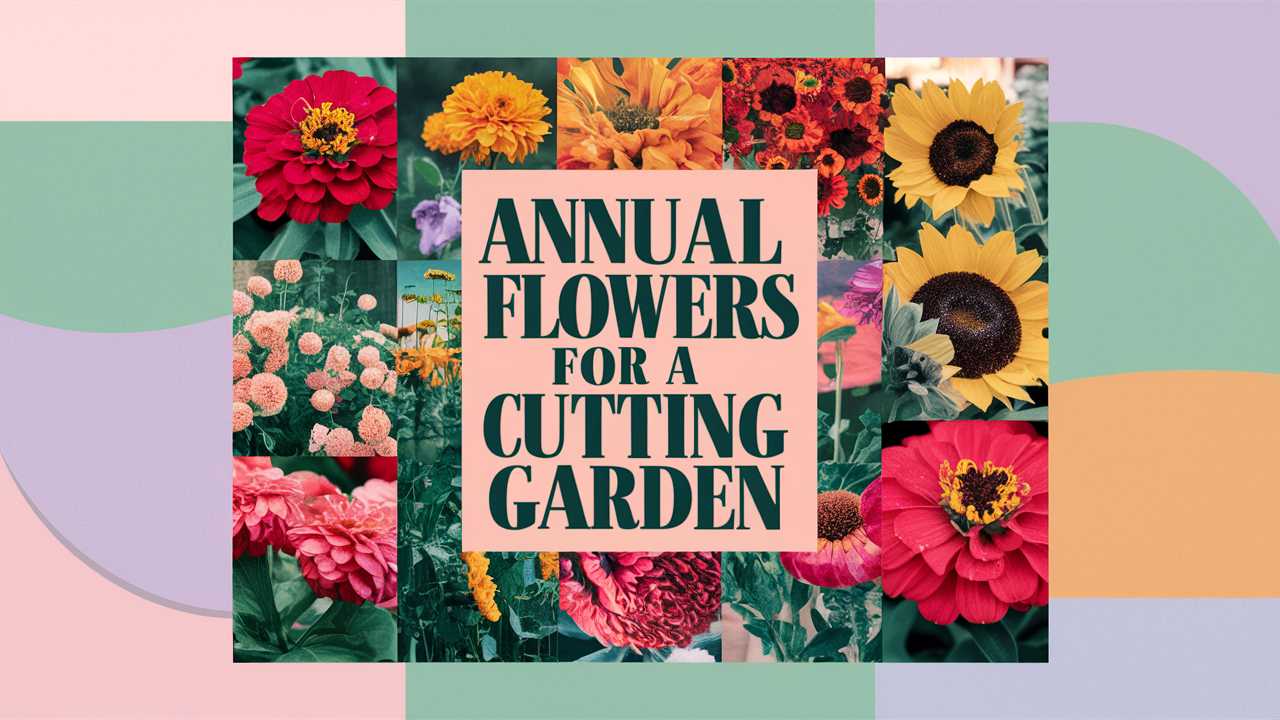In this guide, we’ll explore an array of stunning annual flowers that not only thrive in a cutting garden but also provide a diverse palette of colors and textures. Each flower has its own unique charm and cutting qualities, so let’s explore how to use these brilliant blossoms.
Ageratum

Ageratum, known for its fuzzy, cluster-like flowers, is a lovely addition to any cutting garden. These diminutive flowers bloom in shades of blue, purple, and white, making them an excellent choice for adding softness to your arrangements. When using Ageratum as cut flowers, it’s essential to harvest them just before they fully open. This ensures that the flowers will last longer after being cut. Place them in a vase with water immediately to preserve their freshness. Ageratum has a vase life of around 7-10 days.
For arrangement purposes, Ageratum works beautifully as filler flowers due to its gentle shape and color palette which can complement bolder blooms. Its texture adds depth to bouquets, especially when paired with larger flowers like sunflowers or zinnias. Additionally, Ageratum attracts pollinators, enhancing the biodiversity in your garden, which can contribute to the overall health of your plants.
Bachelor’s Button/Cornflower
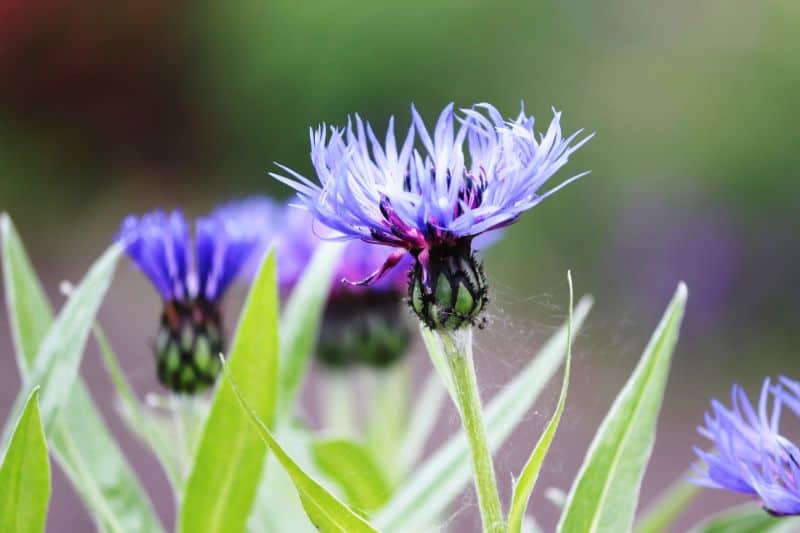
Bachelor’s Button, or Cornflower, is a true classic in the world of cut flowers. With its bold blue, pink, or white petals, this flower can easily brighten up any bouquet. When cutting Bachelor’s Buttons, select the blooms that are just beginning to open. This technique allows them to continue to unfurl in the vase, enhancing their display time. They can typically last a week or more in water.
In arrangements, Bachelor’s Buttons are versatile; they can be featured as the main star or act as a supporting element with other colorful blooms. They bring an airy quality to bouquets and work well in wildflower arrangements, lending a charming, rustic feel. Their robust structure also makes them a favorite among florists for bridal bouquets, where they can withstand handling and travel.
Bells of Ireland

Bells of Ireland are often overlooked but should certainly have a place in your cutting garden. Their unique green, bell-shaped calyxes create a dramatic effect in arrangements. When you cut them, wait until they’ve developed fully but before they start to droop. Bells of Ireland have a vase life that can last up to 10 days, providing ample time to enjoy their striking presence.
These flowers are exceptional for adding height and interest to floral arrangements. Their sturdy, upright nature makes them a great focal point, while their green hues beautifully contrast with warmer colors like oranges and reds. They also pair well with more delicate flowers, creating a wonderful balance in texture. Consider using them in a centerpiece to create a lush and sophisticated look at your next gathering.
Calendula
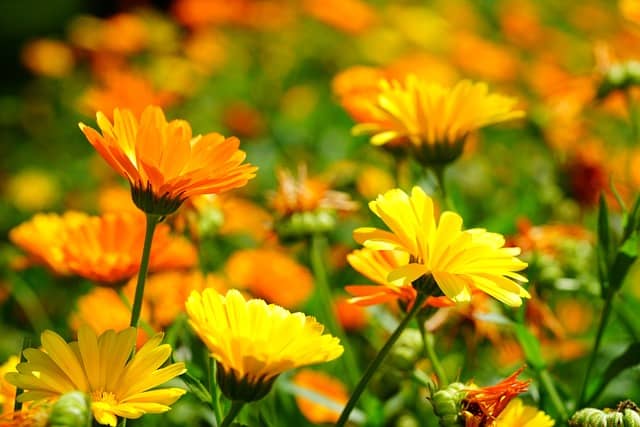
Calendula, often referred to as pot marigold, features bright orange or yellow flowers that radiate cheerfulness. Not only are these flowers beautiful, but they are also edible, which opens up creative opportunities for using them in culinary presentations as garnishes. When using Calendula as a cut flower, harvest blooms early in the morning when they are fully open, ensuring a longer vase life of about seven days.
In arrangements, Calendula can be used as a pop of color, effectively blending with other flowers for dynamic visual interest. Their bold, daisy-like appearance complements both wildflower bouquets and more structured arrangements. Additionally, they lend a casual, carefree vibe that is perfect for summer gatherings or outdoor events.
Cosmos

Cosmos are beloved for their feathery foliage and extensive colors, from soft pastels to vibrant pinks, reds, and whites. When using Cosmos as cut flowers, it’s best to cut them in the morning when they are the freshest, removing any foliage that will sit below the water line. Cosmos can last up to 10 days in a vase, adding a light and airy feel to arrangements.
In floral displays, Cosmos add a whimsical touch, often mixed with other blooms for a garden-inspired look. Their open blooms create a generous amount of space, perfect for highlighting other, denser flowers. Try using them alongside zinnias or sunflowers for a vibrant, sun-kissed mix, or pair them with delicate greenery for a more cottage-style arrangement.
Dianthus (Pinks)

Dianthus, commonly known as Pinks, offer a romantic feel to any cutting garden. Their fringed petals are fragrant, enhancing the sensory experience of bouquets. To use them as cut flowers, harvest Dianthus any time of day, but avoid the hottest parts of the afternoon. When cut, they can stay fresh in a vase for about a week.
In arrangements, Dianthus can serve both as focal flowers due to their vibrancy and as supportive elements that bring texture and fragrance. They work beautifully in wedding bouquets and can be combined with roses or other traditional flowers, giving a classic yet modern feel. Their range of colors and sizes means you can create both compact arrangements and expansive displays by utilizing different varieties.
Globe Amaranth
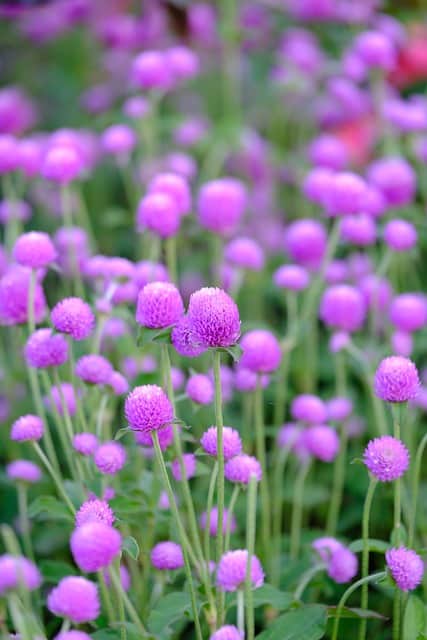
Globe Amaranth features vibrant, spherical flower heads that retain their striking color, even when dried. This makes them an excellent choice for both fresh and long-lasting dried arrangements. Cut Globe Amaranth in the morning, when flowers are fully open, and they can last several weeks in a vase.
In floral arrangements, Globe Amaranth is a wonderful accent flower. Its unique shape and long stems add visual intrigue, making it perfect for fun, eclectic bouquets. Combine them with soft filler flowers and greenery for a beautiful contrast, or use them in dried arrangements for a bohemian-inspired decor look. They also hold their appearance when dried, allowing for seasonal wreaths or decorative touches throughout the year.
Larkspur
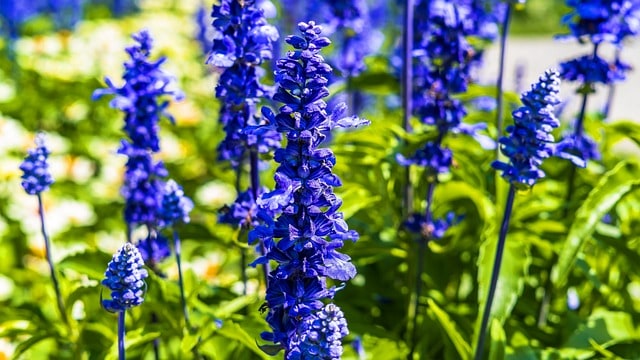
Larkspur serves as a striking vertical element in bouquets, often adorned in vibrant blues, pinks, and whites. These flowers bloom during the cooler months, offering spectacular height for arrangements. When harvested, cut Larkspur at the base of the stem, ensuring you remove any foliage that may sit below water; this can help improve vase life to about a week.
In arrangements, Larkspur is perfect for adding height and drama, serving beautifully in tall centerpieces or bouquets. Pair them with low-growing flowers, like marigolds or zinnias, to create stunning contrasts. Larkspur also brings a touch of formality and elegance, making it a sought-after choice in wedding bouquets and sophisticated floral displays.
Marigolds
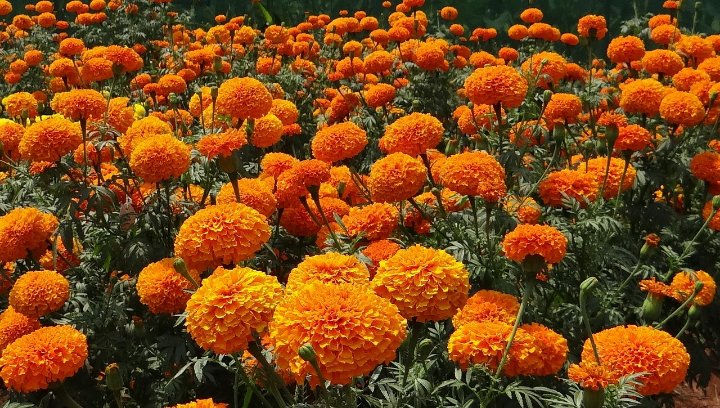
Marigolds boast vibrant hues and a long-lasting presence that makes them a staple in cutting gardens. With blooms that radiate from late spring until the first frost, they are a reliable source of cut flowers. When using Marigolds as cut flowers, harvest blooms in full bloom early in the day for maximum longevity, as they can last about a week in arrangements.
In the floral world, Marigolds are lovable for their cheerful vibe and robustness. They can be featured as the star of a bold, colorful arrangement or used as filler to complement other seasonal flowers. Their strong stems can support their weight well, which makes them ideal candidates for mixed arrangements that need a robust foundation.
Ornamental Kale
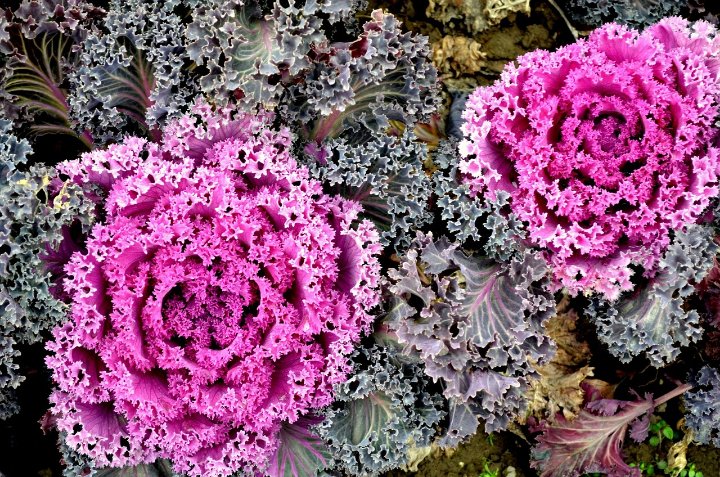
While not a traditional flower, ornamental kale adds texture and unexpected color to your cutting garden. This leafy beauty can stand out with its frilled edges and rich colors, ranging from deep purples to bright whites. When using ornamental kale in cut flower arrangements, cut the heads right before they fully mature to ensure a longer vase life.
In floral displays, ornamental kale serves as a unique filler that surprises and delights. Incorporating kale among traditional flowers can create captivating contrasts, especially when mixed with lighter, more delicate blooms. Additionally, its versatility allows it to be used in fall-themed arrangements, lending seasonal warmth and character.
Poppies
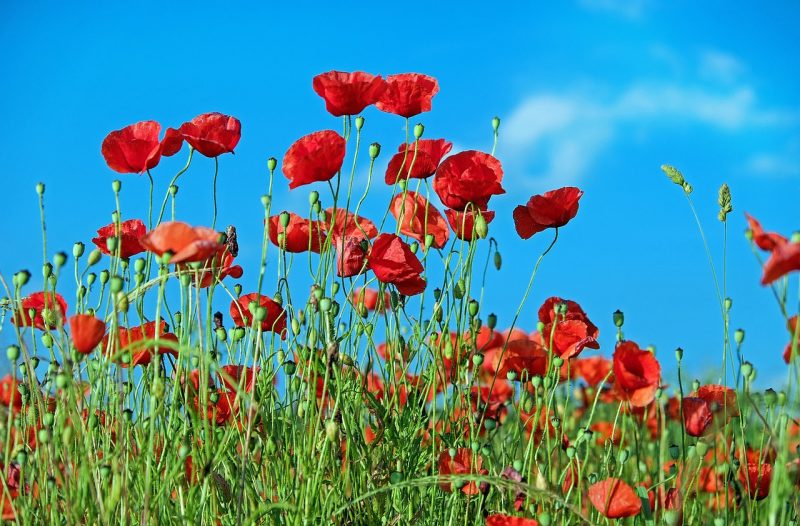
Poppies are legendary for their delicate, crinkled petals and vibrant colors. When using poppies as cut flowers, harvest them early in the day when most of the petals are closed. This helps ensure that their fragile blossoms have time to open beautifully in arrangements. Once cut, they can last about five days in water.
Arranging poppies can be a delicate task due to their soft nature, but they add an artistic touch to any bouquet. They are best combined with other soft, flowing flowers like sweet peas or cosmos, which can accentuate their delicate beauty. Using poppies in arrangements can give your decor a romantic and artistic flair, perfect for gatherings or special occasions.
Snapdragon
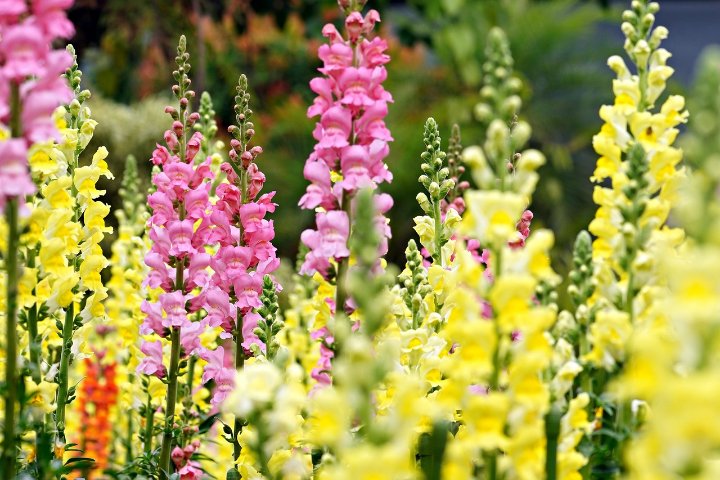
Snapdragons are adored for their striking shape and diversity of colors. When harvesting snapdragons, cut the stems at their base when they are fully in bloom, ensuring to leave a bit of stem for better support in a vase. They can last around seven to ten days, providing a long-lasting beauty to your arrangements.
In the world of floral design, snapdragons are invaluable for their unique form, offering vertical interest to bouquets. They are fantastic choices for both wildflower and formal arrangements, allowing for creative designs that can fit any occasion. Combine them with other colorful blooms such as zinnias and marigolds for a joyful, summer-inspired display or with elegant white flowers for a chic look.
Sweet Peas
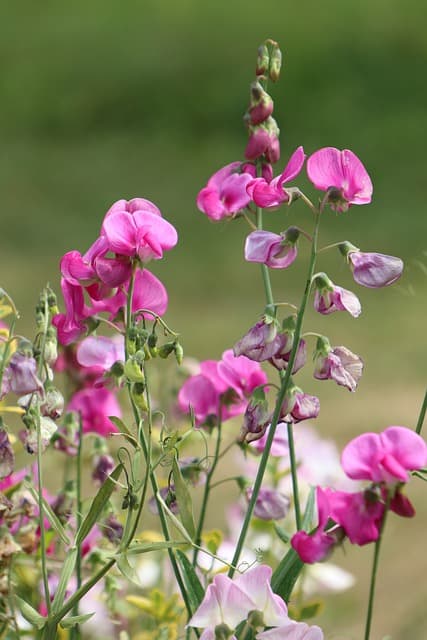
Sweet peas charm with their delightful fragrance and colors that range from pastels to deeper hues. To extend their vase life of about five days, cut them in the morning at their fullest bloom to ensure they open fully in arrangements. Once cut, immediately place them in warm water to encourage them to remain perky.
In bouquets, sweet peas are often used for their enchanting scent and graceful movement. They can drape elegantly over edges, offering a soft, romantic touch. Pair them with complimentary flowers for a whimsical feel, or use them as a fragrant accent in more structured arrangements. Their ethereal nature makes them ideal for weddings and elegant gatherings, transforming any space into a fragrant oasis.
Sunflowers

The bright yellow heads of sunflowers add an undeniable touch of happiness to any arrangement. Harvest sunflowers in the morning when they are fully open, and they can last a week or more in water, creating a joyful focal point in bouquets.
When using sunflowers in arrangements, their bold presence can dominate a display or be complemented by softer blooms. Pair them with blues and whites, like Bachelor’s Buttons or Ageratum, to create a classic summer garden look. They work beautifully in casual arrangements or can add a vibrant surprise when mixed into more formal designs. Sunflowers also symbolize loyalty and adoration, making them perfect for celebrations and heartfelt occasions.
Zinnias

Zinnias are color-packed and incredibly durable, making them a favorite in cutting gardens. They bloom in an astonishing range of shades and sizes, and when harvested in the morning from the base of the stem, they can provide beauty for up to 14 days in a vase.
In floral arrangements, Zinnias are versatile and reliable stars. Their bold colors and sturdy stems mean they can stand up beautifully in mixed bouquets, either as the focal flower or as supportive companions. Zinnias blend excellently with other cut flowers, bringing a cheerful vibe and vibrant energy to any arrangement. Consider using them for garden-themed events, birthdays, or festive gatherings to spread joy and warmth through your floral displays.


